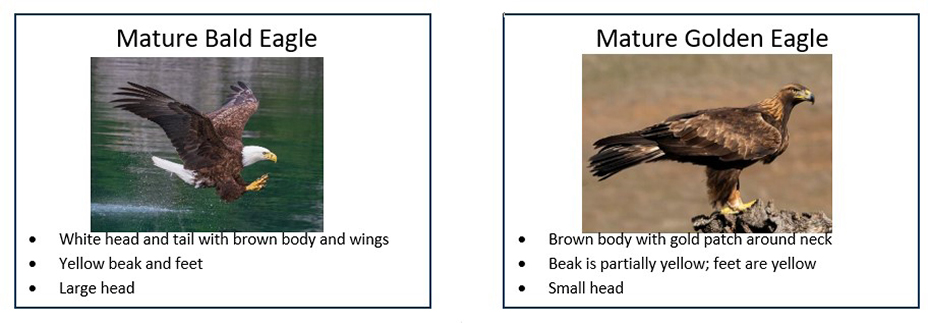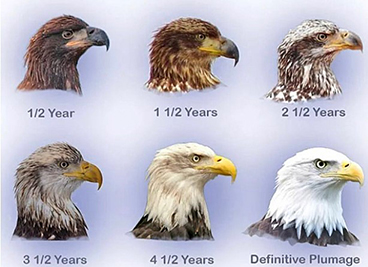Several of the district’s lakes host an annual midwinter eagle survey. The purpose is to help count eagles along standard, non-overlapping survey routes as part of a nationwide midwinter bald eagle survey. The information gathered will be used to index the total wintering bald eagle populations in the lower 48 states, determine eagle distribution during a standardized survey period, and identify previously unrecognized areas of important winter habitat.
There are two main types of eagles counted during the annual eagle surveys: bald eagles and golden eagles.
Here’s a breakdown of their similarities, differences, and how to tell which bird is which, courtesy of Trevor Schuller, USACE park ranger at John Martin Reservoir, Colo.

Both types of eagles are very distinctive as adults. Bald eagles feature a white head and tail, a yellow-orange beak, and a larger head, while mature golden eagle have darker brown feathers with a “golden” patch around the neck, a black-tipped beak, and feathered legs.

As juveniles, bald and golden eagles can look very similar. A juvenile bald eagle often has a mottled pattern and doesn’t receive its distinctive white feathering on its head until it is 3-5 years old. Check out the image (right) from the Avian Report for an example of how bald eagle plumage can change as it ages.
So how can you tell a juvenile bald eagle and golden eagle apart? The answer is in the feet!
 Bald eagles have ‘bare’ legs and feet, meaning that there are no feathers covering them. If the eagle you’re looking at has ‘leg warmers’ in the form of long feathers on its legs that partially cover the feet, it’s probably a golden eagle.
Bald eagles have ‘bare’ legs and feet, meaning that there are no feathers covering them. If the eagle you’re looking at has ‘leg warmers’ in the form of long feathers on its legs that partially cover the feet, it’s probably a golden eagle.
Other differences you might notice between the two are a larger head on bald eagles as well as a more mottled pattern. Take the pictures below left for example. An immature bald eagle may have mottled white feathers intermixed in its darker plumage on its chest and wings, while golden eagles have more defined patches.
When flying overhead, you’ll see a distinctive white line of feathers along the tail and wings on golden eagles.
